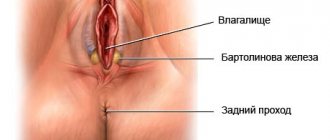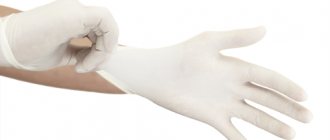- Intimate plastic surgery prices →
- Cost of treatment for stress urinary incontinence →
- Laser vaginoplasty prices →
The use of laser in gynecology is gradually becoming a priority.
The main advantage of using a laser beam is its selectivity. It affects only pathological areas without damaging healthy tissue. Laser energy can be directed to affected areas of any size. Laser therapy has many advantages:
- the method is painless and bloodless;
- the laser beam acts locally, without leaving pronounced scar deformations (this allows it to be used on the cervical mucosa in women of reproductive age);
- The laser treatment method, as a rule, does not require hospitalization, and there is no long rehabilitation period;
- Laser treatment allows you to quickly and efficiently perform non-surgical intimate plastic surgery.
New technologies. New opportunities.
Women's health is the most important factor ensuring the health of future generations. Nowadays, women lead an active lifestyle: they engage in sports, social activities, maintain harmony in family relationships, home comfort and hearth. A woman’s health is an invaluable treasure, a guarantee that she will be a happy wife and mother. Therefore, women always need to closely monitor the condition of their body.
There is a certain group of gynecological diseases, the treatment of which seems to have been found, the methods have been developed and are actively used in practice, but are they really so effective? Why do symptoms return and patients sometimes do not see results? Why, in the conditions of the information boom, rapid progress and new technologies, do some gynecological problems remain unexplained?
Let's try to figure it out.
A cozy loft space on the 2nd floor for spending your holidays in the Eastern Administrative District (15 minutes of a leisurely walk from the Aviamotornaya metro station) - we occupy the entire floor. The ceiling height is 3.5 meters, two-level lighting, which allows you to brightly illuminate the hall with daylight and create twilight with the help of Edison lamps. We do not have a minimum booking by hour, you book for as many hours as you need, just think about the preparation and packing time in advance. Our administrator is in the loft during the event and helps you with information. We allow 1 hour for preparation when renting for more than 4 hours. On the day of the event, the administrator concludes a mandatory contract. Cleaning fee 2000 rub. and it is required.
The loft is located on the territory of the factory and we have no noise restrictions, you can hold noisy parties all night long.
With us you can celebrate your kids’ one-year anniversary, yours and your children’s birthdays even until the very morning, hold a master class, training, photo session and shoot videos in our interiors, as well as with your own decor, celebrate a wedding or corporate party, have a blast at a noisy themed party or arrange your own exhibition.
In our loft you will find an atmospheric hall with a unique designer interior and furniture. Hall 80 sq.m. , the hall can comfortably accommodate 40 people in banquet style, 60 people in theater style or 60. In each room, at your request, we will provide tables and chairs absolutely free of charge, and musical equipment is also included in the rental price.
We also have a bright kitchen with household appliances, which you can also use to heat up food, prepare light snacks and baby formula! You pay for the rental of the hall and can bring food, drinks, decorations, invite animators, photographers, presenters and show performances.
The loft rental price includes: ! Professional sound speakers with aux connection and one portable speaker with aux output! Lighting equipment for a disco effect. ! Fully equipped kitchen with microwave, stove and refrigerator. ! Sofa 2 pcs. , 2 designer chairs and 2 bean bags! 40 folding chairs in white and black. ! 10 tables white and black
Additionally, you can rent: !Radio microphone - 1000 rubles. !Projector and screen = 2500 rub.
!Cookware 40 sets. = 1500 rub.
I. Urinary incontinence
One of the most pressing urogynecological problems is urinary incontinence (enuresis, incontinence). The prevalence of this disease, according to statistics from the Russian Ministry of Health, is not precisely indicated, but, according to some studies, it is about 38.6% in women over 45 years of age.
Urinary incontinence is a disease that significantly disrupts a woman’s quality of life and leads her to social maladjustment. The main symptoms of the disease are a sudden urge to urinate, urinary incontinence when coughing, sneezing, physical activity, the need to wake up at night to empty the bladder, etc.
All these symptoms significantly limit maintaining a normal lifestyle, playing sports, participating in social and, importantly, family life. The causes of urinary incontinence are primarily pathological childbirth, heavy physical exertion and injury.
- Cases of urinary incontinence in women increase during menopause, which is associated with changes in hormonal levels, decreased elasticity, and weakening of the muscles and ligaments of the pelvic floor.
According to some data, the occurrence of incontinence is also associated with hereditary predisposition and lifestyle, so the occurrence of symptoms of urinary incontinence is possible at any age. Today, several directions are used in the treatment of urinary incontinence: performing a special set of exercises (Kegel technique), taking medications, and surgical treatment. Let's consider each of them separately. - A set of Kegel exercises is a good method for preventing and treating the initial signs of the disease. This method is safe and non-invasive (from the Latin Invasio - introduction, invasion), but it requires systematic effort and time, and therefore patients are doomed to perform it for life. According to numerous data from practicing gynecologists and urologists, this technique is currently ineffective.
- Taking medications gives good treatment results, but is not suitable for everyone due to the large number of forms and degrees of severity of urinary incontinence.
- Surgical treatment is by far the most effective treatment for urinary incontinence. There are a huge number of options for surgical operations depending on the cause, type and degree of urinary incontinence, but since this method of treatment is invasive, it requires a certain recovery time, has some risks and complications, as well as long-term relapses - the return of symptoms.
Recommendations
After laser therapy, you must refrain from sexual intercourse and heavy physical activity for three weeks.
If there are no complaints from the patient, control cytology and colposcopy are prescribed only by the 5th week from the end of the operation.
In addition, when there are no pathological changes in the uterine body, examinations for preventive purposes should be carried out at least twice a year.
If the disease recurs, laser therapy is re-prescribed.
II. Genital prolapse (drooping and prolapse of the vaginal walls and internal genital organs)
The second most common pathological condition is prolapse of the internal genital organs or genital prolapse . There is an opinion that this disease is a disease of the elderly, but this is not so. The prevalence of the disease is striking in its scale: between the ages of 30 and 45 this problem occurs in 40 cases out of 100, and after 50 years it is diagnosed in every second woman.
Understanding the mechanism of prolapse and prolapse of the internal genital organs should be considered as a decrease in the function of the supporting apparatus of the pelvic floor muscles.
The causes of genital prolapse are similar to the causes of urinary incontinence: age, heredity, childbirth, birth trauma, heavy physical work, increased intra-abdominal pressure, scars after inflammatory diseases and surgical interventions, changes in the production of sex hormones that affect the pelvic floor muscles, which, in turn, become unable to ensure its usefulness.
Often, pelvic organ prolapse is accompanied by an extreme variety of urological problems : difficulty urinating, urinary incontinence. Such urological complications are observed in almost every second patient.
Treatment options for genital prolapse: the same therapeutic exercises, the use of special support devices - pessaries, wearing bandages and again surgical treatment, as an undeniably effective method, still invasive, requiring rehabilitation, having risks, sometimes relapses and complications.
Indications
Laser therapy can be used to diagnose:
- chronic inflammatory processes;
- disturbances in the functioning of the hypothalamus, ovaries or pituitary gland;
- adhesions and scarring;
- pathologies of the cervix of the uterine body;
- endometriosis and infertility.
In addition, this method is prescribed in situations where there is a history of miscarriage, stillbirth, or fetal death during fetal development.
It is also advisable to use a laser for heavy or scanty menstrual flow.
During pregnancy, laser therapy is used in the last trimester to eliminate toxicosis.
Indications after childbirth are:
- treatment of cracked nipples , mastitis, lactostasis;
- the need to increase milk during breastfeeding;
- acceleration of healing of sutures and uterine tissue.
In addition, it is useful to use a laser after surgery on the genital organs or after curettage.
III. Atrophy of the vaginal mucosa
The next, no less pressing, gynecological problem is atrophy of the vaginal mucosa . This disease is characterized by thinning and inflammation of the vaginal walls due to a decrease in the level of sex hormones in a woman’s body.
This problem is not only the lot of women in menopause, but, unfortunately, more and more often younger ones. Symptoms such as itching and burning in the vagina, a feeling of discomfort in intimate life appear: pain, dryness, mild tissue trauma. Many women, experiencing pain during and after sexual intercourse, lose interest in sex. In addition, since the normal functioning of the reproductive system is closely intertwined with the functioning of the urinary system, atrophy of the vaginal mucosa can cause urological diseases.
As a result of a decrease in estrogen levels, the mucous membrane becomes thinner, the vaginal walls lose their tone and elasticity, the vaginal canal shrinks (shortens) and narrows, and the risk of vaginal infections increases significantly.
To treat atrophy of the vaginal mucosa, special moisturizers are used: lubricants and local vaginal estrogen therapy. The first treatment option can be used independently, without any fear. But the second option must be strictly agreed with the attending physician. Undoubtedly, estrogens are the gold standard for the treatment of atrophy of the vaginal mucosa, but there is a serious range of contraindications to the use of local hormone replacement therapy, which significantly limits its use. But what about those women for whom such therapy is contraindicated? There is a problem, but they are deprived of the best treatment option.
Application of this therapy in gynecology
Experts prescribe treatment with laser radiation for the following diseases:
- in the presence of adhesions in the pelvic area;
- in the case of existing inflammation in the reproductive system, it may be bartholinitis, colpitis, as well as endometritis;
- with impaired ovarian functionality;
- in the presence of pointed papillomas, as well as condylomatosis;
- with existing problems with conception;
- in case of a disrupted monthly cycle;
- with endometriosis;
- in case of decreased reception to certain hormones in the ovarian tissue, as well as in the endometrium;
- if there is a history of frequent miscarriages, intrauterine fetal death, as well as stillborn children;
- with improper functionality of the hypothalamus, as well as the pituitary gland;
- various diseases of the cervix.
Laser therapy is used to eliminate late toxicosis in women, as well as in cases where they have fetoplacental insufficiency. After delivery, this technology promotes accelerated restoration of the uterus, as well as healing of sutures remaining in the perineum after childbirth. With the help of this therapy, it is possible to prevent the occurrence of complications, as well as to treat cracked nipples, lactostasis, and mastitis. In addition, the use of a laser helps restore the body's strength after curettage, various surgical interventions, and abortions.
This method is contraindicated in gynecology if:
- neoplasms, as well as ovarian cysts;
- with a purulent process in cysts of the genital organs;
- in the presence of diabetes mellitus;
- in case of existing fibrocystic mastopathy;
- in the presence of an inflammatory process;
- in case of insufficient body weight;
- in case of fever;
- for various benign and malignant neoplasms;
- with genital endometriosis;
- for existing chronic diseases.
IV. Vaginal relaxation syndrome (large vagina syndrome)
A significant place in the list of “women’s” problems is occupied by a condition that people prefer to remain silent about – “large vagina syndrome”, or, according to foreign literature, Vaginal relaxation syndrome .
Such a concept has not yet been found in Russian medical terminology; not only the term itself is rejected, but also the problem itself.
Vaginal relaxation syndrome is described as a whole symptom complex: primarily a change in the size, shape and structure of the vaginal canal, loss of tone and elasticity of its walls.
Does this syndrome affect the quality of intimate life? The answer suggests itself: the close contact of the inner walls of the vagina and penis, on the surface of which there are countless nerve endings, and the quality of friction between them provide a high level of sexual satisfaction for both partners.
Problems in the intimate life of a sexually active couple, unfortunately, are not widely discussed. The existing dissonance sometimes destroys families or leads to conflict situations. Do women with similar problems turn to a gynecologist or sexologist? Without a doubt, but there are few of them due to low awareness of the possibilities and methods of correcting female sexual dysfunctions.
Of course, one of these methods is surgical correction. But not all women are ready to lie on the operating table. Interest in this problem and ways to solve it is growing significantly. Are there other options for improving the quality of your sex life? Today there is.
The main causes of vaginal relaxation syndrome are: age, dystrophic changes in the muscular and connective tissue structures of the pelvic floor, decreased levels of sex hormones, childbirth and birth injuries, etc. Like previous diseases, this syndrome can occur at any age.
Typically, women associate the postpartum period with the cessation of worries and anxieties associated with pregnancy and childbirth, and the beginning of the joys of motherhood. But it is not always the case. A woman’s body recovers on average within 5-6 weeks and does not always return to its original state.
Are there ways to restore the architecture of the vaginal canal after childbirth? Today such technologies exist. The diseases and syndromes listed above, seemingly completely different, are united by similarities in their causes of origin and a close relationship with each other. For several years now, innovative technologies for treating these conditions have been successfully used in different parts of our planet. This technique is used in only a few cities in Russia.
The use of advanced technologies has opened up new opportunities and significantly improved the quality of treatment. Modern medicine is already unthinkable without innovative equipment. Thus, the laser has become an indispensable assistant in gynecology.
Getting Optimal Results
Fractional CO2 laser copes with the most severe stage of urinary incontinence, while returning patients to a quality life.
The use of fractional CO2 laser in solving gynecological problems will improve the quality of life not only of the woman, but also of the married couple as a whole. Before laser therapy, consultation with a gynecologist is necessary.
More detailed information about the procedure can be obtained at an appointment with our gynecologists. To make an appointment for a consultation, please call the single call center number listed on the main page of the site. Waiting for you!
Fotona laser technologies in the treatment of gynecological problems
Laser medicine in gynecology originated in the last decades of the twentieth century, and nowadays it is difficult to imagine progress without laser technologies, which have opened up new opportunities in solving numerous medical problems. The development of laser medicine in gynecology follows three main branches: laser surgery (using high-energy medical lasers), laser therapy (using lasers with low-intensity radiation) and laser diagnostics.
In 2011, Fotona (Slovenia) introduced an innovative development: deep, uniform heating of tissue volume without damaging its surface using an Intimate FT laser in gynecology (erbium laser) .
This effect leads to a significant reduction in the area of heated tissue, the launch of the processes of restoring the structure of old collagen and the formation of a large amount of new young collagen, improving the blood circulation of the tissue, its nutrition, and oxygen saturation. As a result of this effect, the treated tissue is not only enriched with new collagen, but also becomes firmer, more elastic, tone appears and its function is restored.
Fotona presented two unique technologies for the safe therapeutic use of the Intimate FT laser in gynecology (erbium laser): IntimaLase and IncontiLase , which are protected by worldwide patents.
The introduction of new laser methods in therapeutic gynecology allows for a wide range of procedures and has advantages over traditional methods of treatment.
IntimaLase and IncontiLase technologies , implemented by the therapeutic effects of an erbium laser from Fotona:
- IncontiLase is a patented technology for the treatment and prevention of various forms of urinary incontinence.
- IntimaLase is a patented technology for non-surgical vaginal plastic surgery, treatment and prevention of vaginal relaxation syndrome.
Combinations and variations of the two techniques allow solving a number of problems, such as:
- Treatment of various forms of urinary incontinence.
- Treatment of genital prolapse.
- Treatment of atrophy of the vaginal mucosa.
- Treatment of various forms of sexual dysfunction in women.
- Treatment of vaginal relaxation syndrome as a result of a decrease in natural hormonal levels, as well as occurring in the postpartum period.
- Improving the structure of scar changes in the vaginal wall after surgical and other types of interventions.
Distinctive features and undeniable advantages of treating various gynecological diseases using the therapeutic regimen of the Fotona erbium laser are:
- Efficiency.
- Safety.
- Painless.
- No rehabilitation period.
- Without interrupting the normal rhythm of life.
- The procedures are outpatient and do not require special preparation.
- Proven absence of complications.
- The duration of the procedure is 20 minutes.
The IncontiLase and IntimaLase technologies have no analogues in the world and can only be carried out using the Intimate FT laser from Fotona (Slovenia)!
The effectiveness and safety of the technologies is confirmed by the results of clinical studies by Russian and foreign specialists: histological studies, biopsy samples of the vaginal mucosa, data from ultrasound and magnetic resonance imaging of the pelvic organs, urodynamic studies, elastography, immunohistochemistry and many others. Patient satisfaction after the procedure is 90%.
The Slovenian company has more than 50 years of experience in manufacturing laser systems. Distinctive features of laser equipment are a high degree of efficiency and reliability.
Application
Laser in the treatment of gynecological diseases can be used in several ways, namely:
- Through the anterior abdominal wall. The most common approach involves positioning the laser in the projection of the uterus and appendages in close contact of the emitting device with the skin of the abdominal wall.
- Through the vaginal vaults. It is used less frequently; its implementation requires special gynecological attachments.
- Combined access. The action of the emitters can be directed simultaneously to both the abdominal wall and the vaginal vaults.
- ILBI method - intravascular laser irradiation of blood. It is used to reduce the likelihood of infectious pathologies before and during pregnancy.
The specific technique is prescribed by the attending physician, depending on the pathology and individual characteristics of the patient’s body. It is important to observe regularity: the duration of the course of treatment is also determined by the disease.
The start of therapy should be planned on days 5-7 of the menstrual cycle. Sessions should be held every day, if possible at the same time throughout the course.
To sum it up...
Every woman has the right to independently choose any treatment method suggested by a doctor. Thanks to modern laser technologies, new and absolutely safe therapeutic methods for treating various forms of gynecological diseases are emerging. IncontiLase and IntimaLase technologies lies in their absolute effectiveness, the absence of age restrictions, complications and rehabilitation period. The advent of laser in gynecology opens up new opportunities for women for whom other types of treatment are not suitable, do not help or are contraindicated. Women's health is the basis of future generations, harmony in family life and activity in social life.
New patented technologies IncontiLase and IntimaLase are actively used in the USA, France, Germany, England, Croatia, Turkey, Bolivia, Brazil, Slovenia, Ecuador and other countries of the world, and now proudly in Russia.
Still have questions? Call!
Dear women! We invite you to visit our clinic of aesthetic medicine, cosmetology and gynecology “SOLA”, undergo the necessary examination and ask all your questions to a gynecologist-endocrinologist, a specialist in aesthetic gynecology.
Our goal is to help our patients improve their health and beauty, and therefore improve their quality of life. And having earned trust once, we will do everything in our power to keep it forever!
Properties
Treatment of gynecological pathologies with a laser is based on the action of a directed light flux on the affected tissue. This method of physiotherapy is safe for patients and allows you to achieve positive dynamics in a short time.
Therapeutic laser in gynecology can have the following effects:
- improvement of local blood circulation;
- stimulation of the immune system;
- relief of symptoms of inflammatory pathologies;
- elimination of pain syndrome;
- acceleration of recovery processes.
Laser treatment in gynecology has a number of advantages over other methods, namely:
- Painless and well tolerated.
- Noticeable effect after the first session.
- Potentiates (strengthens) the effect of medications, making it possible to reduce the dose of medications.
- Does not provoke addiction.
- Does not give adverse reactions, either allergic or any other.
- Speeds up recovery several times.
- Extends the period of remission of chronic pathologies.
- In addition, the ease of implementation of this physiotherapeutic technique allows you to undergo treatment courses on an outpatient basis, and not just in a hospital.
Laser therapy: indications and contraindications for laser treatment
The reasons for refusing to use laser therapy in the treatment of gynecological diseases may be:
- suppuration of a cyst located in the reproductive organs;
- feverish state (acute);
- fibrocystic mastopathy;
- severe chronic illness;
- diabetes;
- uterine fibroids;
- ovarian cyst or tumor;
- severe exhaustion of the patient;
- development of a benign or malignant neoplasm;
- acute inflammation or infection;
- low degree of blood clotting;
- severe genital endometriosis.
You will also need to check your blood pressure, since this technology is not used for hypertension.
Mechanism of action
Physico-chemical effects: high-energy laser radiation allows you to coagulate or dissect the tissue of pathological lesions. Low-intensity laser radiation (LLI) is used to influence tissue, which is of particular importance for physiotherapy. The radiation power in the latter case is about 1–6 mW/cm2.
When NLI influences a biological object, part of the radiation is reflected, the other is absorbed. When light energy is absorbed, various physical processes occur, the main of which are external and internal photoeffects (photobioactivation), electrolytic dissociation of molecules and various complexes, leading to changes in electrical conductivity and electronic excitation of biomolecules. Absorption of photon energy causes a weakening or rupture of inter- and intramolecular bonds - ion-dipole, hydrogen and van der Waltz. An increase in quantum energy leads to selective photolytic cleavage of biomolecules and an increase in the content of their free forms, which have high biological activity.
The effect is dose-dependent, more pronounced at low frequencies. Cells and tissues have their own electromagnetic fields and free charges, which are redistributed under the influence of the electric field created by the laser beam. Another irritating effect has been proven to stimulate metabolism, creating optimal conditions for autoregulation in the body itself.
The mechanism of action of a laser is based on the interaction of light and a photosensitizer - a substance whose molecules are capable of absorbing light and transferring energy to other molecules that do not absorb light. For example, photosensitizers can be porphyrin, catalase, superoxide dismutase, and enzymes that affect oxidative processes. The maximum absorption of red laser radiation occurs on DNA molecules, cytochrome oxidase, cytochrome, superoxide dismutase, and catalase. Through these enzymes, the therapeutic effect of laser radiation occurs in various processes. When the wavelength of laser radiation coincides with the maxima of the absorption spectrum of some biomolecules, it is selectively absorbed by tissues. Moreover, infrared radiation is absorbed mainly by molecules of nucleic acids and oxygen, red radiation - by molecules of DNA, cytochrome oxidase, cytochrome C, superoxide dismutase and catalase.
Low-intensity laser radiation changes the conformational properties of molecules of protein structures, disrupting intermolecular interactions and causing the transition of solutions to a new structural state.
The oxygen molecule, being an acceptor of laser radiation, selectively absorbs light - a chain of biological reactions is triggered, among which the key one is lipid peroxidation, which induces many biological processes: stress, inflammation, etc. Selective activation of the protein synthetic apparatus of the cell nucleus, respiratory chain, antioxidant system (as a response to increased lipid peroxidation) and secondary messengers (cyclic nucleotides, phosphatidylnositides, proteins and Ca ions) leads to increased oxygen consumption and increased intracellular oxidation of organic substances, stimulates the synthesis of proteins and nucleic acids acids, glycolysis, lipolysis and oxidative phosphorylation of cells
Physiological effects: laser radiation is a stress agent, and the reactions that arise in response to its action often fit into the scheme of a nonspecific adaptive response. Depending on the dose received in the body, metabolic processes are first stimulated at the cellular level, then at the tissue level, and lastly at the level of the whole organism. Increasing the dose leads to depression. Depending on the radiation parameters, the predicted effect of laser therapy can be obtained.
Today, laser technologies are widely used in practical medicine. Their active use in gynecological practice began in the mid-1980s. CO2 lasers, erbium, diode and fiber optic laser systems are used in surgical interventions. Laser systems are used for urinary incontinence and atrophy of the vaginal mucosa. As a result of laser exposure, the intermolecular cross-links of the collagen triple helix are shortened, which leads to an instant reduction of the fibers by two-thirds of their length compared to the state before the procedure. Heating collagen causes it to instantly contract, causing the fibers to become shorter and thicker. In addition to the instantaneous reaction of collagen reduction in tissues, the processes of reconstruction of collagen fibers and neocollagenesis are launched.
Execution Features
Laser intimate rejuvenation is carried out using an erbium laser, which emits a light flux with the ability to regulate radiation parameters. The laser beam acts at the required depth, “evaporating” a microscopic layer of tissue, which instantly triggers cell regeneration in the surrounding tissues. With increasing effect, new collagen begins to be produced, microcirculation of the treated area improves, muscles are tightened with increased elasticity, and the skin of the genital organs is brightened.
The procedure is non-contact, the patient does not feel pain. The total duration of one session (with anesthesia and the actual treatment) takes from half an hour to an hour. The technology makes it possible to control the depth of exposure with high precision, and there is no direct thermal effect on the tissue, and the risk of burns is eliminated. Visible results appear after the first procedure, but the maximum aesthetic effect is achieved after a course of several sessions.
What is laser therapy: description of the technology, its advantages
Laser therapy in gynecology is a modern method of physiotherapy, which is widely used to treat pathologies of the reproductive system in women. The technique is distinguished by high efficiency and safety.
The action of a therapeutic laser allows you to trigger biochemical reactions, improve the permeability of cell membranes and tissue trophism. As a result, recovery processes are improved and recovery is accelerated.
- 1 Properties
- 2 Indications
- 3 Contraindications
- 4 Application
- 5 Equipment
Laser therapy is one of the modern physiotherapeutic treatment methods, widely used in many branches of medicine, including in obstetric and gynecological practice.
This type of therapy is characterized by safety and high efficiency; under its action, important biochemical processes are launched, the permeability of cell membranes improves, the absorption of oxygen by tissues increases, which generally accelerates the process of recovery and restoration of damaged organs and tissues.
Our doctors
→ Gynecology and obstetrics → Treatment → Laser therapy
Laser therapy is a modern method, widely used both in gynecology for the complex treatment of a large group of diseases of the female reproductive system, and in other areas of medicine.
Laser therapy refers to physiotherapeutic methods of treatment and is based on the use of optical radiation generated by a laser. The most important feature of a laser, which determines its efficiency, is the presence of a fixed wavelength, i.e. This is a monochromatic light.
The average power of physiotherapeutic lasers varies in the range of 1-100 mW, pulse power is 5-100 W with a light pulse duration of 100-130 ns. The energy parameters of laser radiation are selected depending on the operating mode of the devices and the technique used, as well as indications for treatment.
All laser equipment that exists today is divided into three groups: for surgical treatment, for therapeutic treatment and for diagnostics. Surgical lasers are most often high-intensity, while diagnostic and therapeutic lasers are low-intensity. Accordingly, the latter will be discussed in our article.










